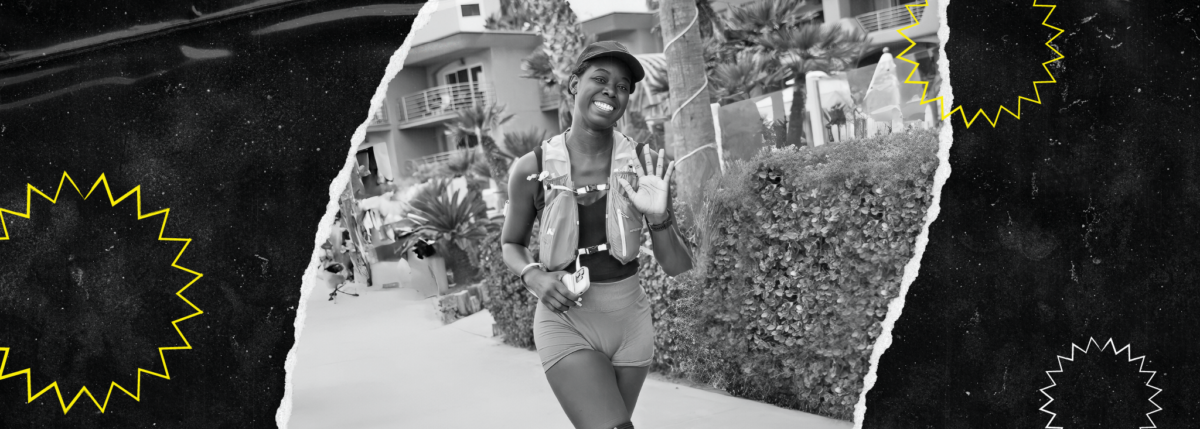What My First Month with Freestyle Libre Taught Me about My Diabetes
Written by: T'ara Smith, MS, Nutrition Education
5 minute read
March 29, 2021
Venice Furio shares her experiences about her first month with the Freestyle Libre and the challenges of accessing CGM and making healthy food in the Phillippines.
Venice Furio calls diabetes, for her, a “double whammy.” With both sets of grandparents having diabetes, as well her mother, and her father having hypertension, being diagnosed with it herself wasn’t a surprise. Venice was diagnosed with diabetes, with an A1C of around 10 percent, in 2015 after being hospitalized with a serious case of acid reflux. In addition to that, she’s managed a rare autoimmune disease called Henoch-Schnonlein Purpura, which required her to be on steroids for more than a decade. After her diabetes diagnosis, she changed her diet and was able to bring her A1C down to nearly 7 percent several months later.
“At the time I felt good about my progress, but after I started powerlifting, it became more difficult to keep my blood sugar stable and it wasn’t going down as much as I expected,” said Venice. “In fact, I noticed my blood sugars were always higher after a workout and weren’t going down as expected, even with my dietary changes.”
At the time, Venice didn’t know why her blood glucose was higher after her more intense powerlifting workouts compared to steady-state cardio workouts. As a result, she started to feel as if she weren’t doing enough to manage her diabetes and was searching for a new solution. That solution would come years later in 2020 when she learned about the Freestyle Libre 14 day system, a continuous glucose monitor (CGM).
Venice became aware of the CGM device in a diabetes support group on Facebook. She liked the idea of monitoring her blood sugar in real-time instead of having to prick her fingers several times per day. She also thought it would be convenient because she wouldn’t have to excuse herself to check her blood sugar.
However, obtaining the device was an expensive investment. While insurance coverage in the United States varies among individuals that can impact one’s ability to obtain a CGM, Venice, who lives in the Philippines pays for hers out of pocket.
“I really wanted to get the Libre, but it’s very expensive here,” said Venice, who was able to purchase one in February of 2021. “It’s about 3500 pesos, which is about $70 U.S. dollars. I was spending 700 to 1000 pesos for about 50 test strips and because I was doing all of this experimenting to learn which foods to eat and which ones to avoid, I figured the Libre was worth trying out.”
What Venice Learned during Her First Month Wearing the Freestyle Libre
Fortunately, her first month with the Freestyle Libre turned out to be a good investment. Like others with type 2 diabetes have said about wearing a CGM, it can help you learn more about your blood glucose trends. For Venice, she was focused on learning how certain foods, including the timing of meals, and how her workouts were affecting her blood glucose levels.
“I noticed I was scanning to check my blood sugar more frequently,” said Venice. “I was pricking my fingers about five to seven times per day and when I started wearing the Freestyle Libre, I was checking my blood sugar maybe 40 or 50 times per day. I was becoming more conscious about what I was eating and seeing how my blood sugar changed when I took certain medicines. I take both pills and Ryzodeg 70/30 insulin, so I did some experimenting to see how fast my blood sugar would go down depending on which one I’d take.”
After a few weeks, she and her endocrinologist used the data from her Freestyle Libre to reduce her insulin dosages and decided to focus more on diet and exercise. Venice would also learn that food and exercise weren’t the only things that could cause her blood glucose levels to fluctuate.
“I ended up coming down with the bad cause of the flu and saw my blood sugars were out of whack, no matter what I did,” said Venice.
Though she’s no longer powerlifting, she incorporates kettlebell strength training workouts twice a week, brisk walking for 10 kilometers (6.2 miles) several times per week and aims for 10,000 steps per day. She was also surprised to learn that fruits don’t raise her blood sugar as much as she thought.
“Ever since I was diagnosed, I’ve always been told that I can only eat one piece of fruit per day,” said Venice. “But I started having smoothies every morning with a cup of berries, a banana, kale and nut milk. In the first week, my blood sugar would rise quite a bit, but on my second week, my blood sugars were normal. I’ve been scared of carbs but now I find myself eating more fruits and veggies.”
Diabetes Access in the Philippines
In the Philippines, nearly 4 million adults have diabetes. Several contributing factors to the rise of diabetes in the country include lack of comprehensive preventative diabetes care; limited insurance coverage for diabetes care which means most people will pay out-of-pocket for devices, medications and lab work; and an increase in urbanization and westernization of the culture.
Venice says having type 2 diabetes can imply one has a higher socioeconomic status but says that’s not always the case.
“Here in my country, there’s a big misconception that diabetes is a disease that you get if you’re rich,” said Venice. “If you get to eat all of these tasty foods and indulge yourself, then people think you’re rich because you can afford to do those things. But that’s not always true.”
Venice works in the Business Processing Outsourcing (BPO) industry, where businesses outsource certain jobs to call centers in the Philippines. From clocking into work to bathroom and lunch breaks, call center employees’ time is strictly monitored, which means there isn’t a lot of time to prepare healthy foods or make a lot of time for exercise.
“The BPO industry is a major driver for our economy and most of us work at night, so a lot of us eat fast food in order to meet the demands of our jobs,” said Venice. “I’ve seen a lot of my coworkers develop hypertension, prediabetes and diabetes. I have at least five coworkers who are now on dialysis, and they’re in their late twenties and early thirties.”
It’s not always helpful to tell someone with diabetes with limited resources to simply “eat healthily.” But it is helpful to offer ways to make the best choices whenever possible. Venice tries to make adjustments where she can, but insight from wearing her Freestyle Libre helps to make those changes easier instead of pricking her fingers.
“I like cheeseburgers and pizza, and we don’t have salads at our McDonald’s here,” said Venice. “I would get the large fries, now I just get the small one. For burgers, I would remove the bun. I try to avoid pizza because I saw on my Libre how much it spikes my blood sugar, but I’m doing more research to learn more about how certain carbs can spike my blood glucose. The Libre has helped me make healthier decisions.”
Don’t Ignore Diabetes, Ask for Help
Due to the expense of wearing the Freestyle Libre, Venice doesn’t plan on using it on a consistent basis, but she still finds it helpful in helping her manage diabetes more effectively. As a result of her wearing the device for a month and making changes, Venice saw a change in her A1C. In December 2020, her A1C was 6.4 percent, now it’s 5.4 percent. She hopes these devices can become widely accessible to people with type 2 diabetes in her country so they can learn to manage it as best they can. For people who are struggling to manage their diabetes or even discuss having diabetes, Venice says don’t hesitate to ask for support.
“Don’t be afraid to ask for help,” said Venice. “In my country, diabetes carries a stigma and people tend to hide their condition. I think a lot of it has to do with the costs, both financially and health-wise like facing complications such as kidney failure. I just lost my aunt who had untreated diabetes and developed kidney failure. Last November, I lost an uncle due to diabetes-related complications. Do not be afraid to be open and seek professional help. Do your research, too, to make sure you aren’t being misled by misinformation. You can’t ignore diabetes, but you can learn to live with it.”
This content was made possible with support from Abbott, the makers of FreeStyle Libre 2, a Founding Partner of Beyond Type 2.
To read other stories by people with type 2 diabetes who wear the Freestyle Libre 14 day system, click here.

Author
T'ara Smith, MS, Nutrition Education
T’ara was diagnosed with type 2 diabetes in July 2017 at the age of 25. Since her diagnosis, she focused her academic studies and career on diabetes awareness and living a full life with it. She’s excited to have joined the Beyond Type 1 team to continue her work. Two years later, T'ara discovered she'd been misdiagnosed with type 2 and actually has latent autoimmune diabetes in adults (LADA). Outside the office, T’ara enjoys going to the movies, visiting parks with her dog, listening to BTS and cooking awesome healthy meals. T’ara holds an MS in Nutrition Education from American University.
Related Resources

Jordan Sooter’s journey to running marathons began in college as a way to stay fit....
Read more

Antoine Gibson is no stranger to overcoming challenges. As a saxophonist and marathon runner living...
Read more

Danica Collins not only prepared for one of the most challenging physical events of her...
Read more

